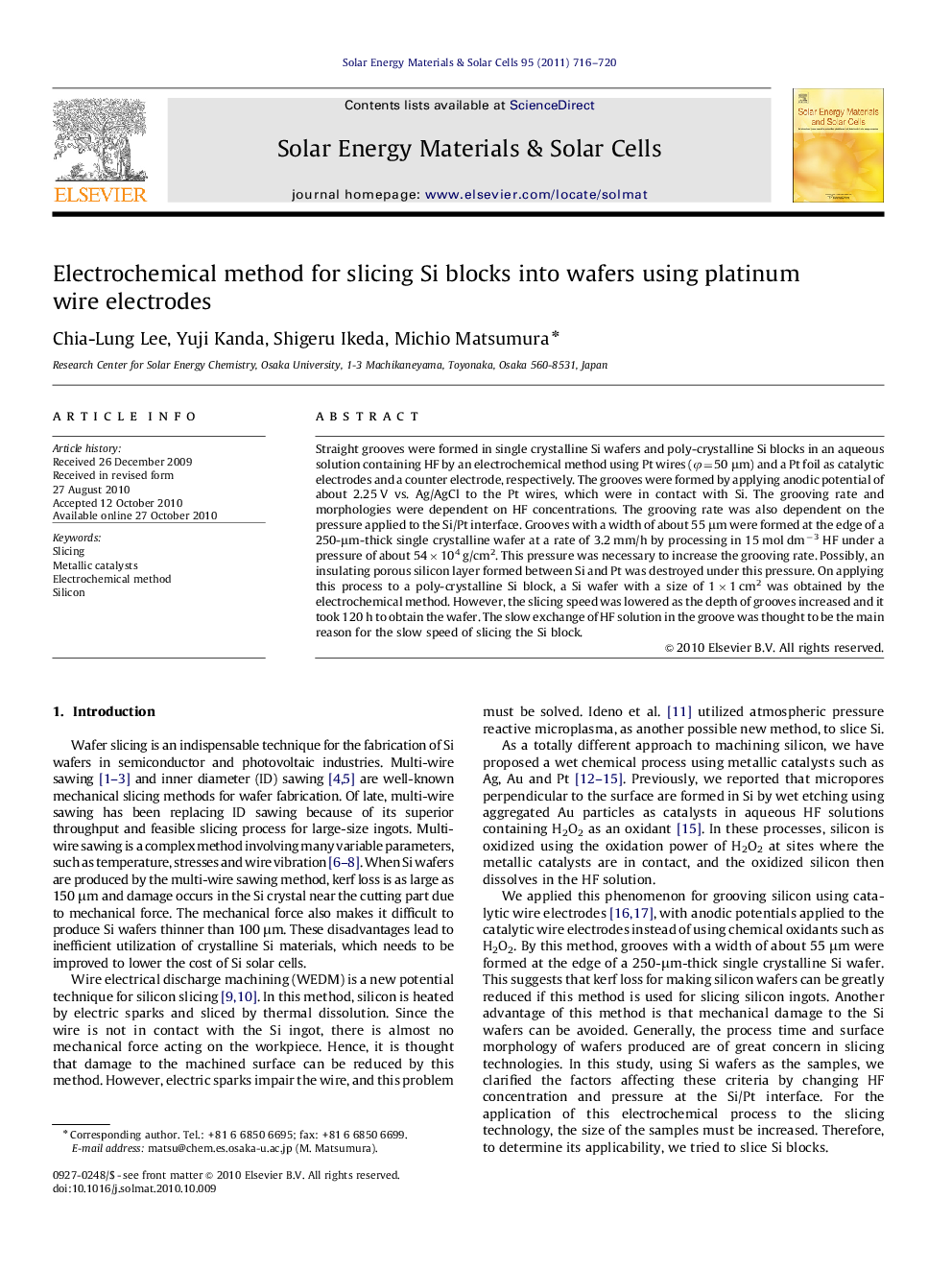| Article ID | Journal | Published Year | Pages | File Type |
|---|---|---|---|---|
| 79246 | Solar Energy Materials and Solar Cells | 2011 | 5 Pages |
Straight grooves were formed in single crystalline Si wafers and poly-crystalline Si blocks in an aqueous solution containing HF by an electrochemical method using Pt wires (φ=50 μm) and a Pt foil as catalytic electrodes and a counter electrode, respectively. The grooves were formed by applying anodic potential of about 2.25 V vs. Ag/AgCl to the Pt wires, which were in contact with Si. The grooving rate and morphologies were dependent on HF concentrations. The grooving rate was also dependent on the pressure applied to the Si/Pt interface. Grooves with a width of about 55 μm were formed at the edge of a 250-μm-thick single crystalline wafer at a rate of 3.2 mm/h by processing in 15 mol dm−3 HF under a pressure of about 54×104 g/cm2. This pressure was necessary to increase the grooving rate. Possibly, an insulating porous silicon layer formed between Si and Pt was destroyed under this pressure. On applying this process to a poly-crystalline Si block, a Si wafer with a size of 1×1 cm2 was obtained by the electrochemical method. However, the slicing speed was lowered as the depth of grooves increased and it took 120 h to obtain the wafer. The slow exchange of HF solution in the groove was thought to be the main reason for the slow speed of slicing the Si block.
